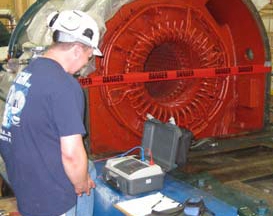Exploding Sockets Revisited

Recently, one of our sockets exploded while loosening a bolt using a HyTorc hydraulic wrench. No one was injured, but we take these incidents seriously, generating a “Near Miss” report and subsequent corrective action.
We discussed exploding sockets in a previous Safety Tip, which you can review in the May 8, 2012 post (see below). Since that post, we purchased TorcUp sockets for all our tool sets, and sprayed them yellow to make sure they were exclusively used with our HyTorc heads. One of these dedicated sockets broke under load. Please comment (below) on additional steps we can take for our corrective action. We need your experience and expertise.
Additional information: The broken socket was less than a year old. It was a 1” drive, 1 5/8” 12 point socket under an 8000 PSI load. We chose TorcUP sockets as they were the middle of the road in pricing of the three vendors we reviewed (one was HyTorc).
All of us face similar safety concerns in our operations. If you would like one of your concerns discussed in this forum, please contact us via Mr. Turbine (click here) and we will start the conversation in our next newsletter. We will not share your contact info but you can also post anonymously. Mr. Turbine will be happy to give an immediate response if you request it, but of course we must have your correct info.

 A Polarization Index (PI) test is generally performed at the same voltage as the Insulation Resistance (IR) test. Where the IR test is performed for a period of one minute, the PI test is performed over a period of ten minutes. This gives the absorption (polarization) current ample time to decay, and reveals a more detailed indication of the total leakage and conduction current. As such, PI is a good indication of winding contamination, moisture ingress (leakage currents), and/or bulk insulation damage (conduction currents).
A Polarization Index (PI) test is generally performed at the same voltage as the Insulation Resistance (IR) test. Where the IR test is performed for a period of one minute, the PI test is performed over a period of ten minutes. This gives the absorption (polarization) current ample time to decay, and reveals a more detailed indication of the total leakage and conduction current. As such, PI is a good indication of winding contamination, moisture ingress (leakage currents), and/or bulk insulation damage (conduction currents). The Insulation Resistance Test measures the integrity of the generator’s winding insulation, and therefore the likelihood of developing a ground. A test voltage is applied to the generator and the current flow required to maintain that voltage is measured over a period of time (typically one minute). In simplest terms, the less current flow, the higher the resistance value, and the better the insulation.
The Insulation Resistance Test measures the integrity of the generator’s winding insulation, and therefore the likelihood of developing a ground. A test voltage is applied to the generator and the current flow required to maintain that voltage is measured over a period of time (typically one minute). In simplest terms, the less current flow, the higher the resistance value, and the better the insulation.